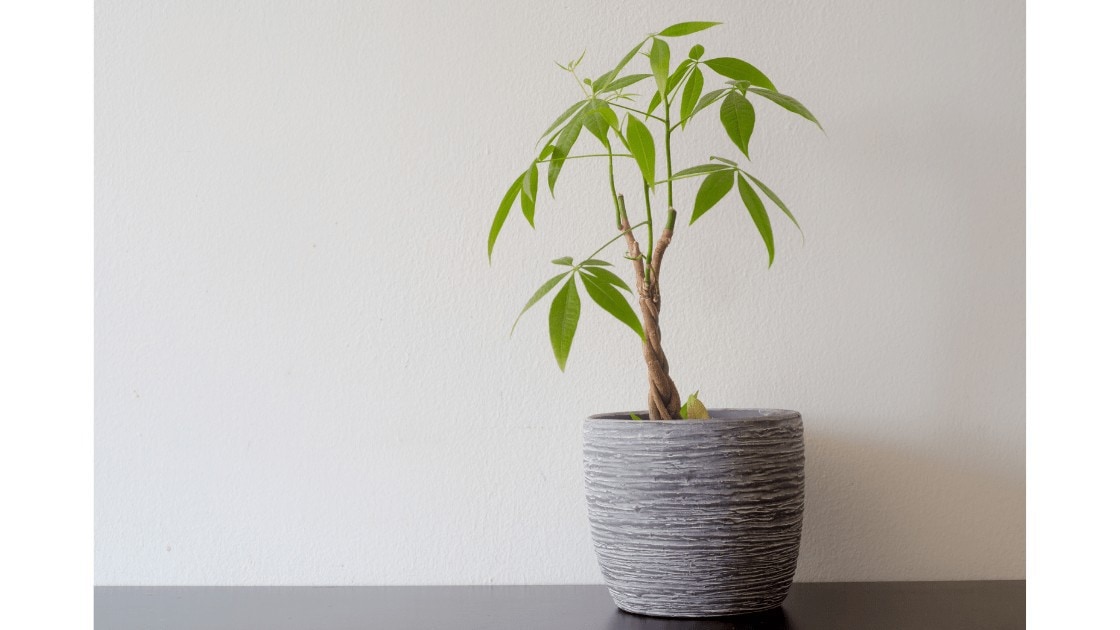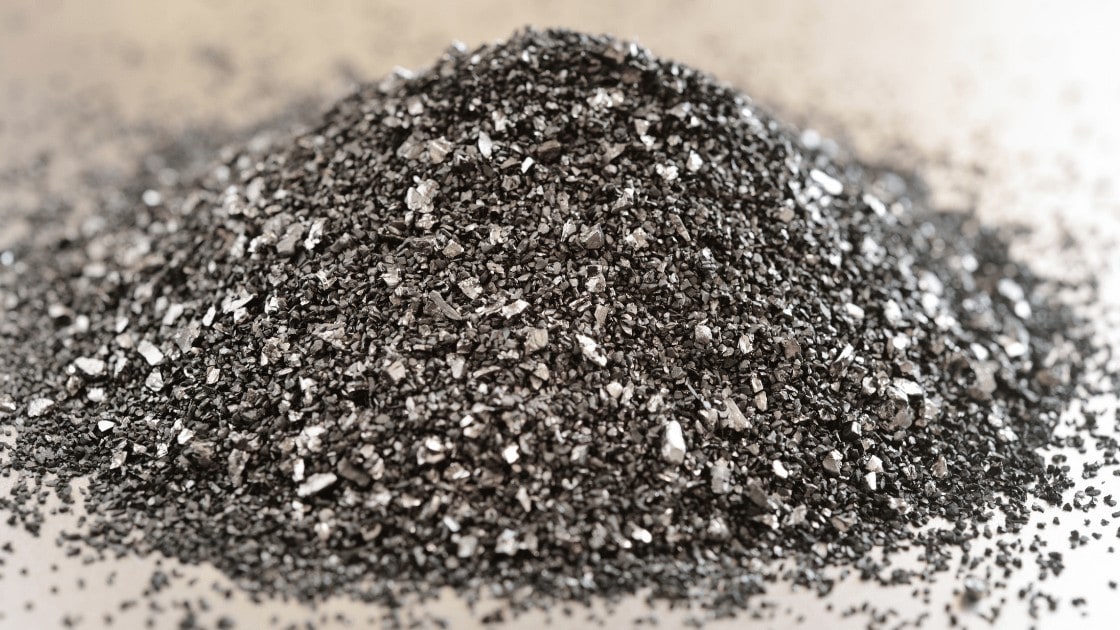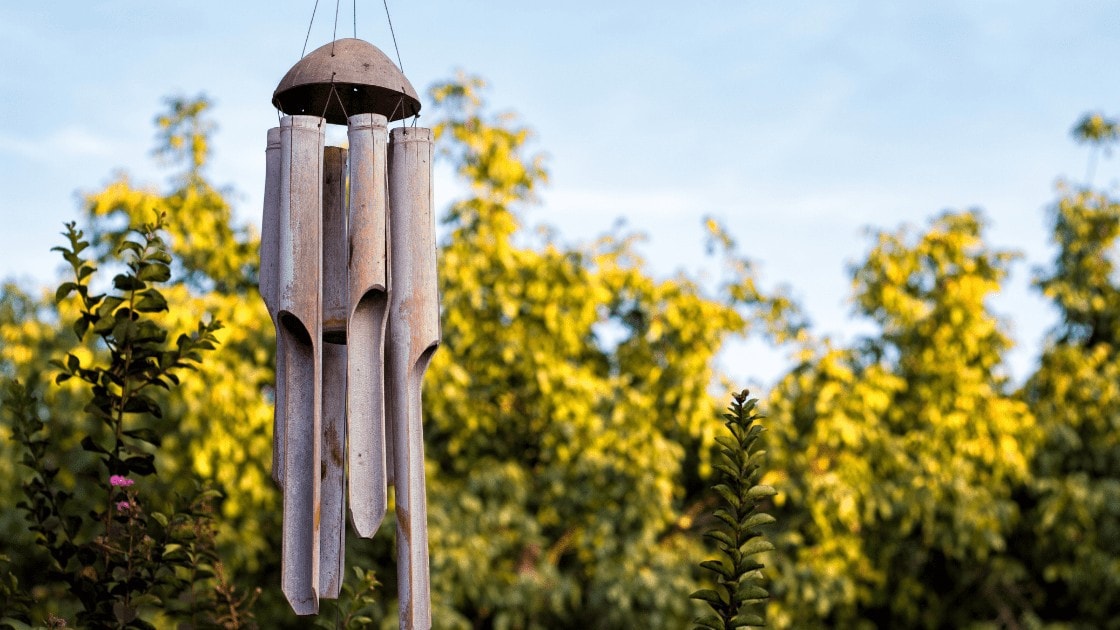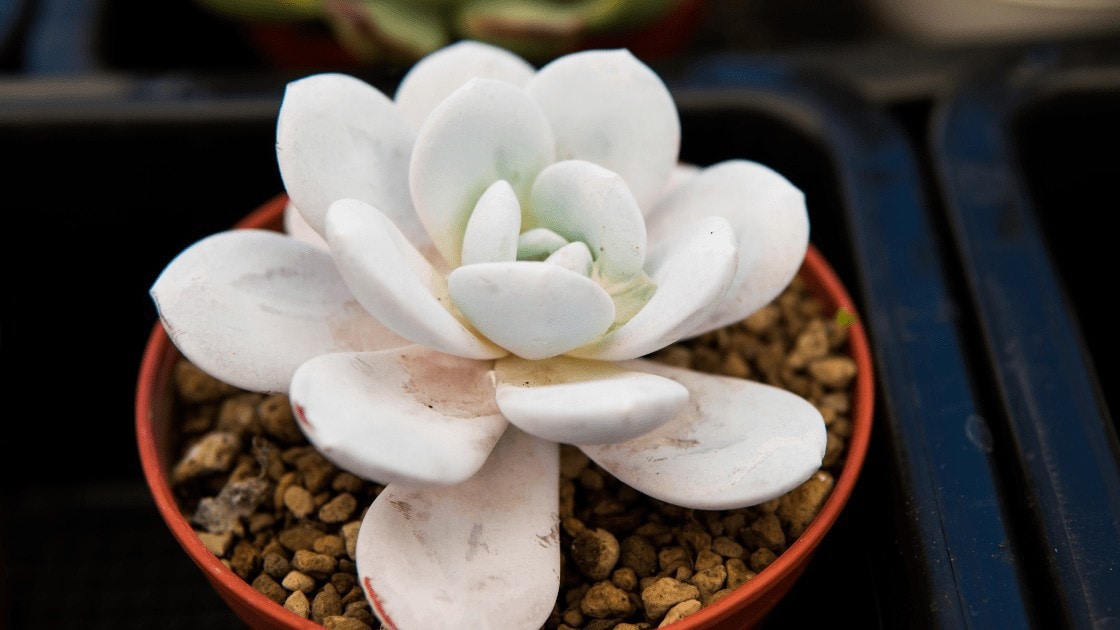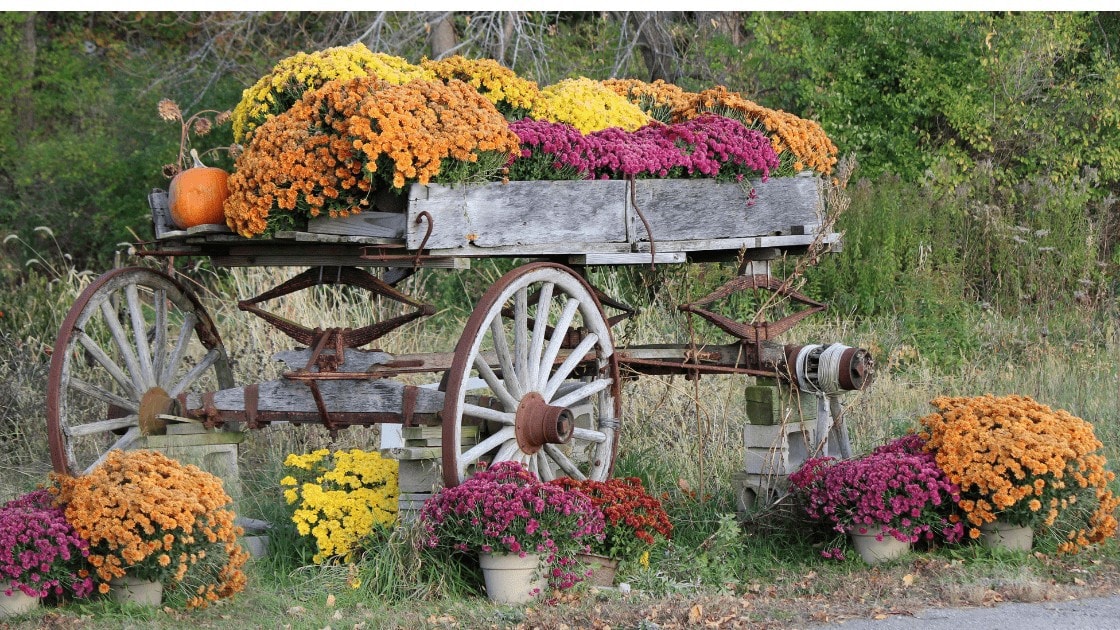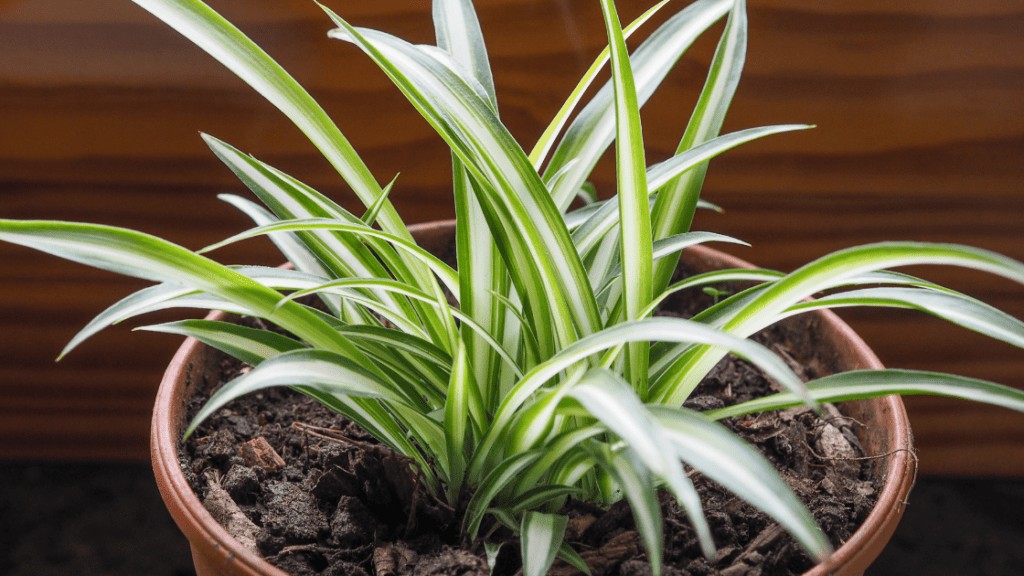
Spider plants belong to the Chlorophytum genus and are one of the most commonly grown indoor plants. Their popularity isn’t an accident – they are one of the easiest plants to grow and care for and are extremely easy to propagate. This plant tolerates a wide range of conditions and can survive in relatively low light conditions, as well as, purifies the air they inhabit.
Chlorophytum comosum, which is the most commonly grown spider plant species is also known for being mentioned in the NASA Clean Air Study as a plant that can detoxify formaldehyde, toluene and xylene – common indoor air pollutants which are released from synthetic fabrics, old furniture and poor quality insulation.
What Are Spider Plants?
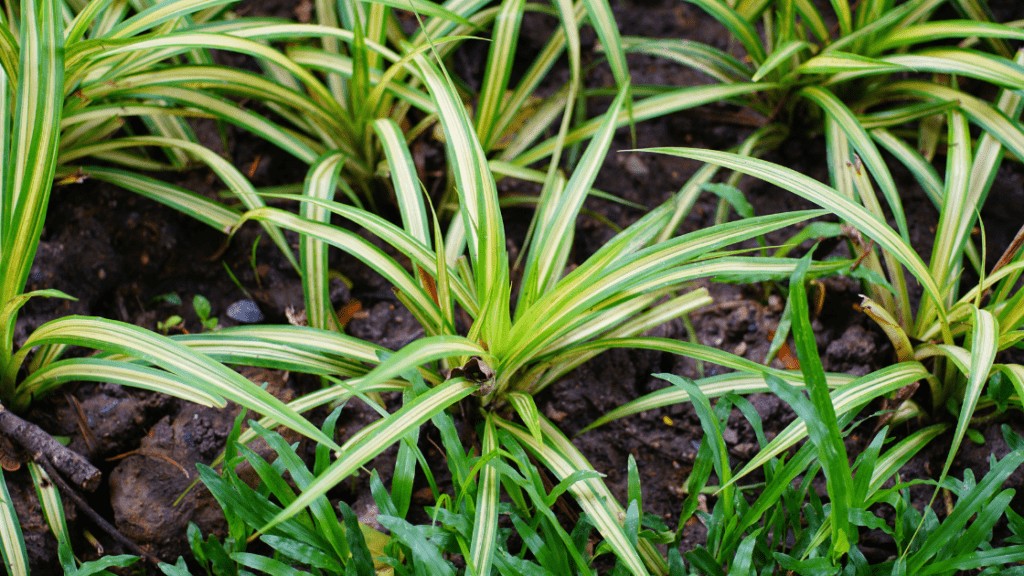
The term ‘spider plant’ refers to the members of the Chlorophytum genus – the genus contains around 200 species, many of which have multiple varieties and forms.
Browse our Affiliate Products
Most spider plants have variegated leaves with a white streak in the center(Vittatum variety) or multiple streaks on the sides(Variegatum variety), but species with all-green leaves do exist as well.
However, those non-variegated species aren’t that popular because they have a somewhat lower visual appeal. Spiders plants come from southern Africa, where they grow in shaded, damp areas near rivers and forests.
The commonly grown Chlorophytum comosum is known for producing plantlets, often referred to as ‘babies’ – they are similar to the ‘runners’ which strawberry plants produce and are an effortless way to propagate the plant. However, in order to start producing babies, the plant needs to grow in optimum conditions and it needs to be at least one year old. It also needs to be provided with complete darkness during the night.
Other Common Names For Spider Plants
Spider plants go by many names, including airplane plants, spider ivy and ribbon plants, but most of those alternative names are outdated. The plant is sometimes incorrectly referred to as ‘St. Bernard’s Lily’, which is actually a different plant species in the same botanical family.
Air Quality Benefits Of Growing Spider Plants (Chlorophytum) Indoors

Apart from providing some green color to a room, spider plants are known for removing toxic compounds from the air – specifically formaldehyde, toluene and xylene.
All three of those are contained in old wood furniture and can slowly get released into the indoor air. This detoxifying ability of spider plants is more of an interesting scientific fact than something that can be practically utilized – to be effective in removing toxins, a large number of plants have to be incorporated in a room.
The plant performs the air purification mainly through its roots and the amount of indoor air that ultimately passes through the root zone of a potted plant is very small. Opening your windows a few times a day and providing proper ventilation are much more effective for improving your indoor air quality.
Are Spider Plants Difficult to Care For And What Growing Conditions Do They Require?
Spider plants are extremely easy to grow. One of the most difficult aspects of growing plants indoors is providing a sufficient light intensity for photosynthesis.
Chlorophytum is one of the plants with the lowest light requirements and can grow well at light levels as low as 6,000 lux. Even in very low light conditions of less than 1,000 lux, the plant will still survive, but it will not produce ‘babies’ nor will it grow very fast. It will also probably not flower and may lose some of its green coloring.
As with all indoor plants, lighting is always key to produce, or lack the results you are looking for. All plants if not given the right amount of light will flower or grow, so maintaining a balance is critical. One such device is called a lux meter that are fairly inexpensive you can buy at any garden center or hardwood store.
Do They Do Better Indoors or Outdoors?
Chlorophytum is most commonly grown indoors. For year-round outdoor cultivation, only USDA zones above 9 or 10 are suitable in such cases can be grown like perennials – spider plants are not frost-tolerant at all. They also don’t tolerate the full sun very well and do require some shade.
During the summer, spider plant pots can be placed outside in a shady area, which will make the plant grow a lot faster compared to indoors.
How Much Sun Do They Need?

Placed in direct sunlight, the plant quickly starts drying up and developing brown spots. In its natural habitat, Chlorophytum does sometimes grow in direct sunlight, but indoor Chlorophytum plants are not usually acclimatized to those conditions.
The most commonly grown variegated variety is mostly adapted to growing indoors in a bright location, but not in direct sunlight.
What Type Of Soil Is Required?
Chlorophytum likes a very rich and well-draining soil. Compost-heavy soil mixes work best, but most general purpose potting mixes will also work fine. Compacted, clay-rich soils will quickly suffocate the roots of the plant and kill it.
For more information about soils, check out our article by clicking on the link. What Are The BEST Potting Soils for Every Type of Plant?
Is Feeding/Fertilization Recommended?
Spider plants do benefit from regular fertilization.
Most balanced, soluble fertilizers with a moderate amount of nitrogen will work well. Care should be taken to avoid over-fertilization, which quickly results in yellowing of the tips of the leaves or wilting. It’s best to alternate a fertilizer solution with plain water to avoid buildup of fertilizer solutes in the soil.
Fertilization should be provided only if the plant is in its growth phase – if the daylight duration decreases and the ambient temperatures drop considerably during the winter, Chlorophytum will go into a resting phase, during which it shouldn’t be fertilized and will also require much less water.
Optimal Watering Frequency
Spider plants like frequent watering – it’s best to determine the optimal watering frequency by observing the moisture level of the surface of the soil and being on the lookout for any wilting or browning of the tips.
Spider plants also like a high air humidity, which can be simulated well with frequent misting of the foliage. Over-watering can be just as dangerous as insufficient watering and as we’ll explain later, they can both lead to the same symptoms of wilting and browning.
Propagation
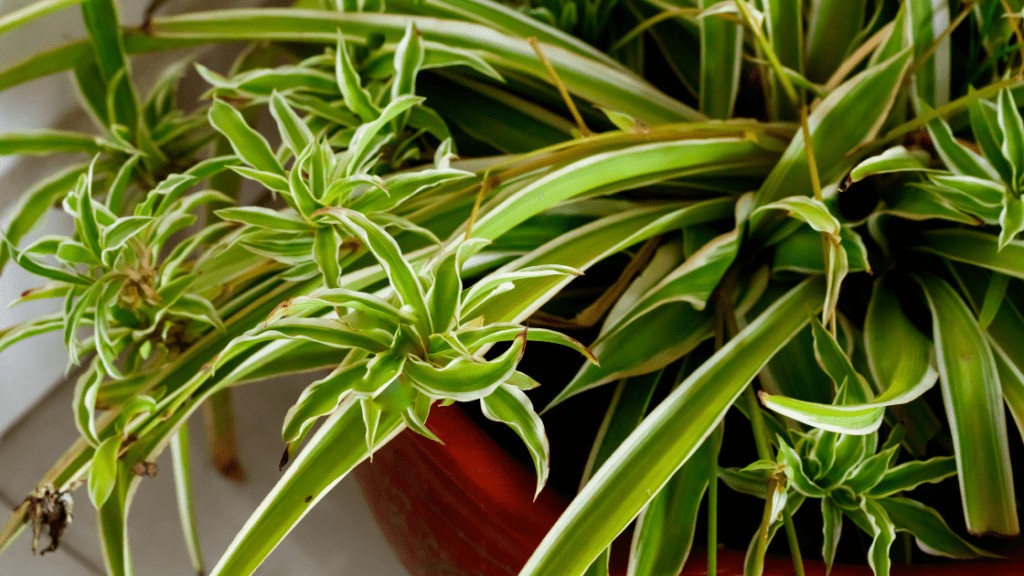
Propagating spider plants after they have produced plantlets (‘babies’) is extremely easy and doesn’t require much of an explanation.
Once the babies are cut off from their mother and planted in soil they quickly start growing into mature plants. The babies already contain tiny, stagnant root buds which will immediately start growing and developing into actual roots as soon as they come into contact with wet soil.
Propagating plants that haven’t yet produced babies isn’t as easy. If your plant is flowering, which usually occurs during the summer months, you can pollinate the flowers, collect the seeds and plant them.
Spider plant seeds aren’t the fastest sprouting and it can take up to 3 weeks for the seedlings to emerge from the soil. Ultimately, the best way to propagate a spider plant is from plantlets/babies – if your plant isn’t producing any, keep reading – in a bit, we’ll explain the most common reasons why that is and how to fix it.
Common Issues You May Encounter When Growing Spider Plants
Spider plants are easy to care for and you’ll rarely encounter problems that are life-threatening to the plant, even if the growing conditions are sub-optimal. Most of the issues with spider plants come from improper watering or over-fertilization.
Proper Water Balance
Spider plants aren’t demanding, but getting their watering frequency right and achieving proper ambient air humidity can sometimes be a challenge.
If the plant is watered too much and too frequently, it may start displaying symptoms of water stress. Leaf tip burn and wilting are the most common symptoms of water stress.
A novice gardener may interpret the drying of the tips of the leaves as the plant requiring more water, even though the opposite is the case. Water stress occurs when the air in the root zone of the plant gets displaced by excess water.
This starves the roots of oxygen and makes it difficult for them to transport water. As a result, the plant appears to not be getting enough water, even though the soil is very wet.
Conversely, low air humidity and insufficient watering will also lead to similar symptoms – browning of the tips of the leaves, wilting and general poor growth. Those problems may occur even with proper watering, if the air humidity is very low. The best solution is to provide some misting of the foliage.
Fertilizer Buildup
The buildup of fertilizer solutes in the soil is yet another problem that manifests itself as leaf tip burn.
It’s caused by applying soluble fertilizer too many consecutive times. Each time, the water evaporates, leaving behind the fertilizer salts which eventually build up to a dangerously high concentration.
If you suspect that the tip burn of your spider plant is caused by excess fertilizer in the soil, the easiest solution is to perform a flush – water the pot with a very generous amount of clean water and throw away the runoff.
The clean water will dissolve the mineral buildup in the soil and that should fix the problem. Unfortunately, the damage caused by tip burn is permanent, but once the problem is corrected the new growth should be healthy.
Plant Not Producing ‘Babies’
Spider plants not producing babies is a common frustration for indoor gardeners.
Fortunately, the problem can be easily corrected by providing the plant with its optimum growing conditions, especially with sufficient light intensity.
In poor light conditions, the plant will not have the excess energy necessary for producing plantlets. The formation of plantlets requires a short-day trigger, which means that the plant needs to be kept in complete darkness for at least 12 to 14 hours every night.
Even dim lighting during the night cycle can prevent the formation of plantlets, so if you really want your plant to start producing babies, you’ll likely have to move the pot to a completely dark location every night for at least three weeks. Timer-controlled grow rooms or tents are another option.
Final Thoughts
Spider plants are an excellent indoor plant that can be grown in any potting container. Although they are very tolerant to low-light conditions, providing them with insufficient light will greatly slow down their growth and will prevent the plant from producing ‘babies’.
The most important factor for successfully growing spider plants is the watering frequency and air humidity. Too much or too little watering can both cause the tips of the leaves to turn brown and dry up.
Low air humidity is another problem, which can be corrected by misting the plant a few times a day. Spider plants can absorb and detoxify formaldehyde – a common indoor pollutant. However, relying on them for maintaining indoor air quality isn’t practical and they are still best grown purely for their ornamental value.




